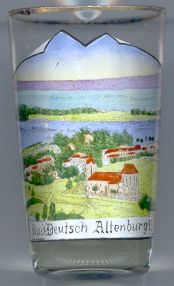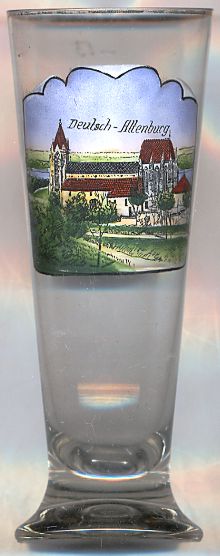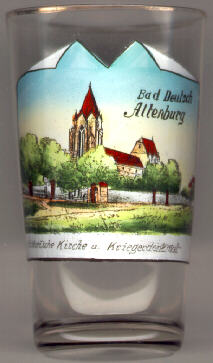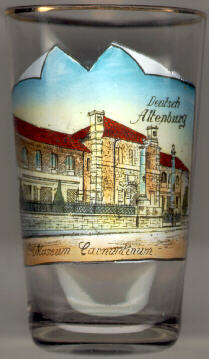

|
| ÖSTERREICH | AUSTRIA |
| Bundesland: Niederösterreich | Lower Austria |
| Bezirk: Bruck an der Leitha |
 Bad Deutsch-Altenburg is situated at an elevation of 148 m on the right bank of the Danube
in the Lower Austrian district of Bruck an der Leitha. The municipality has a population of
about 1,400 (2005).
Bad Deutsch-Altenburg is situated at an elevation of 148 m on the right bank of the Danube
in the Lower Austrian district of Bruck an der Leitha. The municipality has a population of
about 1,400 (2005).

 The thermal springs of Bad Deutsch-Altenburg were already used by the Romans. The water
with a maximum temperature of 28°C contains high concentrations of iodine and sulfur
(the highest concentrations in Central Europe) and are used for the treatment of rheumatic diseases.
Altenburg began to develop as a settlement next to a castle that had been founded in the 11th century.
The oldest document mentioning Altenburg dates from 1297. In 1579 the village obtained the privileges of a market town.
The prefix "Deutsch" (German) was later added to the name in order to avoid confusions with
Ungarisch-Altenburg (Magyaróvár, today part of Mosonmagyaróvár) in western Hungary, which is
only about 50 km southeast of Deutsch-Altenburg.
The thermal springs of Bad Deutsch-Altenburg were already used by the Romans. The water
with a maximum temperature of 28°C contains high concentrations of iodine and sulfur
(the highest concentrations in Central Europe) and are used for the treatment of rheumatic diseases.
Altenburg began to develop as a settlement next to a castle that had been founded in the 11th century.
The oldest document mentioning Altenburg dates from 1297. In 1579 the village obtained the privileges of a market town.
The prefix "Deutsch" (German) was later added to the name in order to avoid confusions with
Ungarisch-Altenburg (Magyaróvár, today part of Mosonmagyaróvár) in western Hungary, which is
only about 50 km southeast of Deutsch-Altenburg.
The  Pfarrkirche Mariä Empfängnis (Parish Church of the Immaculate Conception) [left, no. 2461, and right, no. 370]
goes back to a church that, according to a legend, was founded around AD 1000 by St. Stephen, King of Hungary.
The church of today was built in the 13th century in Romanesque style. In the 14th century a Gothic chancel and the West tower were added.
Pfarrkirche Mariä Empfängnis (Parish Church of the Immaculate Conception) [left, no. 2461, and right, no. 370]
goes back to a church that, according to a legend, was founded around AD 1000 by St. Stephen, King of Hungary.
The church of today was built in the 13th century in Romanesque style. In the 14th century a Gothic chancel and the West tower were added.

The  Museum Carnuntinum [left, no. 2461, and right, no. 370]
was built in 1904. The museum contains collections of finds discovered at excavations from the nearby Roman town of Carnuntum.
Museum Carnuntinum [left, no. 2461, and right, no. 370]
was built in 1904. The museum contains collections of finds discovered at excavations from the nearby Roman town of Carnuntum.
Carnuntum was founded as a military settlement by the Romans in the 1st century.
The civilian town became the capital of the province of Pannonia under Emperor Traianus (AD 98–117).
It obtained the status of a free town from Emperor Hadrian (117–138), and the status of colonia from Emperor
Septimius Severus (193–211) who was also proclaimed Emperor here. Marcus Aurelius (121–180, emperor 161–180)
wrote his famous Meditations in Carnuntum.
Other places of the same name that are depicted on glasses in this collection are:
![[scale]](lineal.jpg)